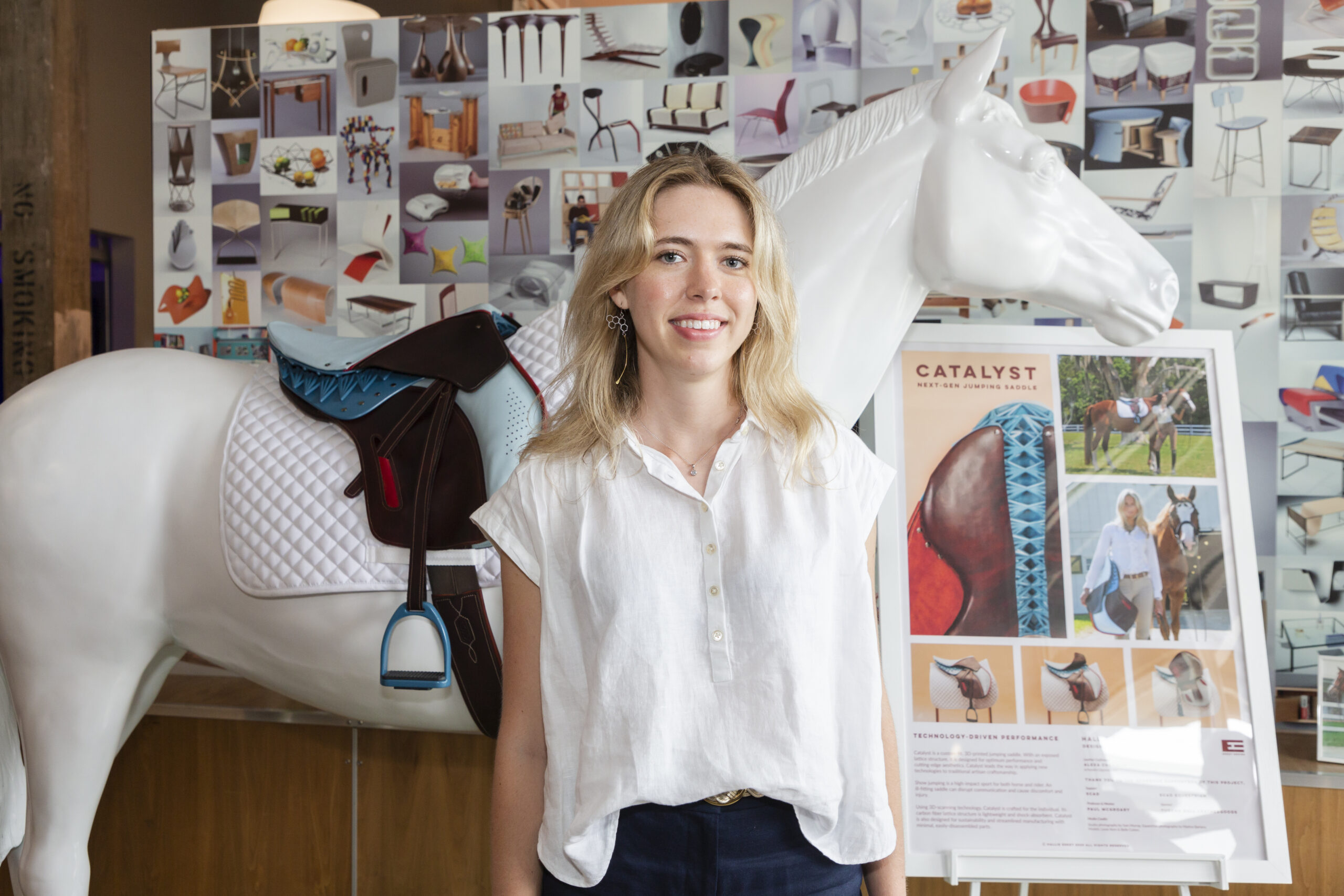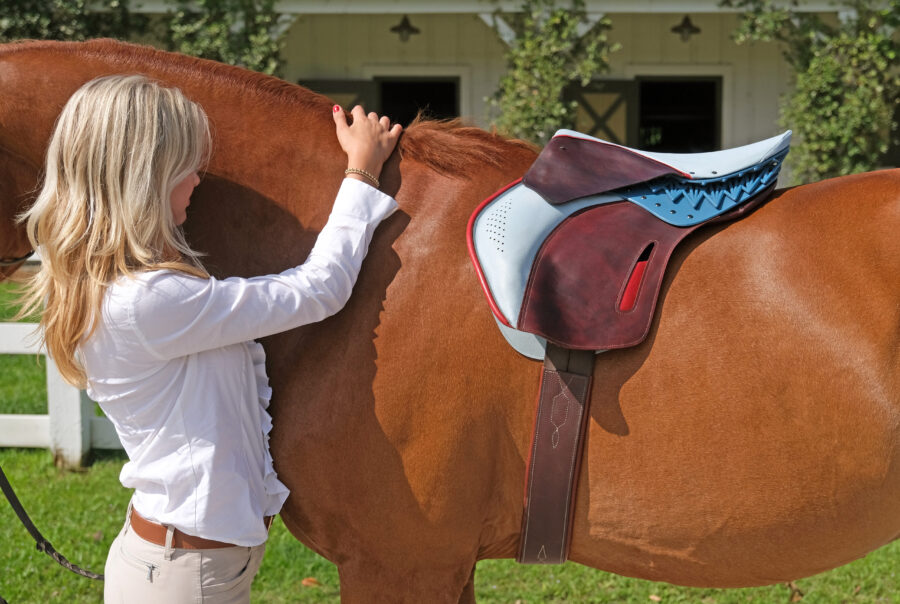
How one SCAD grad is blending her equestrian passion with cutting-edge design
Words by Paige Townley
Photos courtesy of SCAD and Matteo Bariana
In the equestrian world, precision, performance, and passion intersect—and for recent Savannah College of Art and Design (SCAD) graduate Hallie Eskey, that’s also where design lives. Hallie earned her degree in Industrial Design with a minor in Design for Sustainability, graduating summa cum laude. But her vision reaches far beyond the classroom. A Texas native and lifelong rider, Hallie’s experiences in the saddle directly shaped her innovative design program project: Catalyst, a custom-fit, 3D-printed jumping saddle that blends artisan craftsmanship with next-generation technology. Here, Hallie shares how her time at SCAD and as a student-athlete on the equestrian team fueled her creativity and what it took to reimagine one of the most essential tools in her sport.
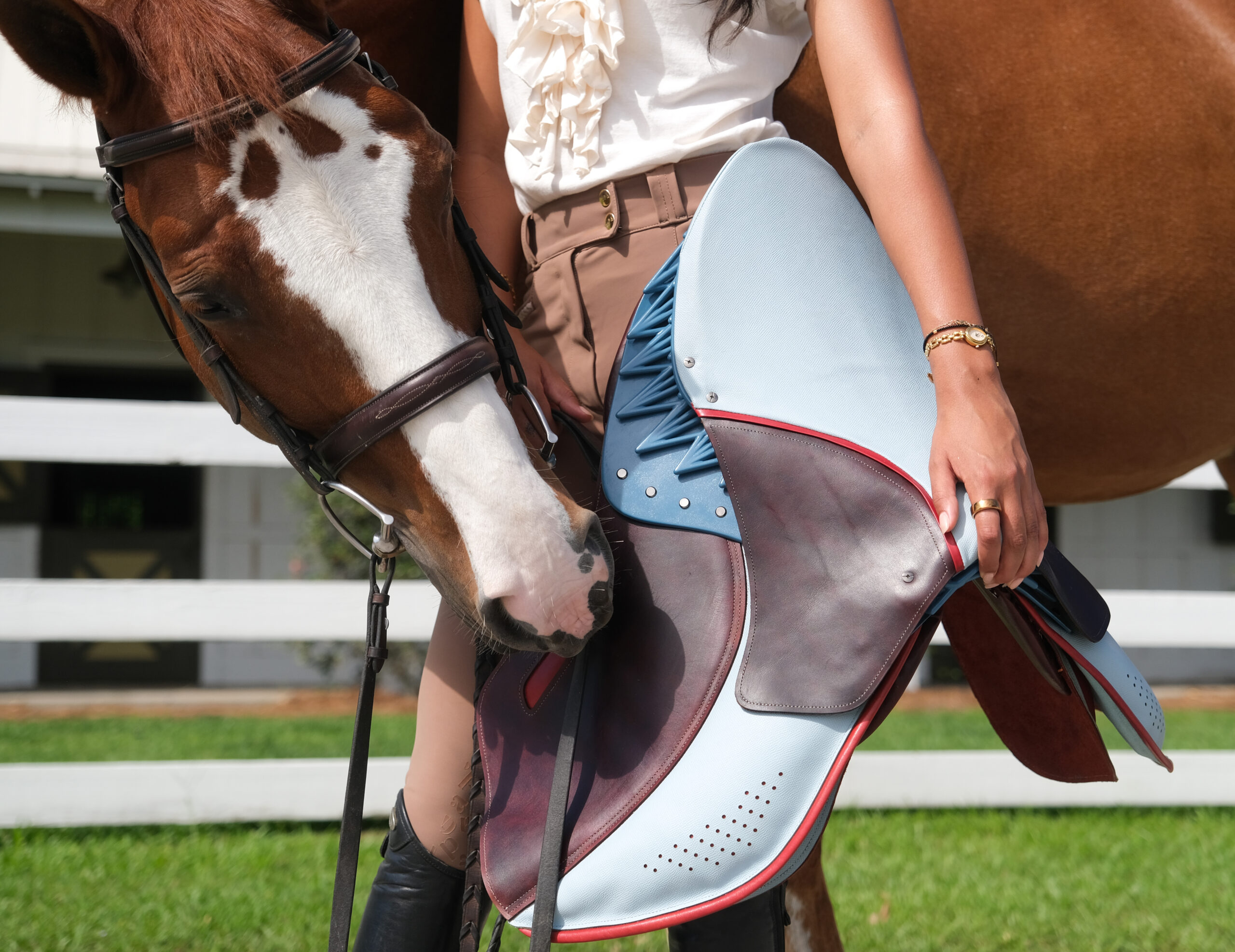
What first drew you to industrial design, and why did you choose SCAD?
My passion for art, matched by my passion for riding horses, is ultimately what led me to choose SCAD. I was first drawn to SCAD’s amazing equestrian team, which led me to visit the school. When I went to SCAD in Savannah, I immediately fell in love. SCAD is truly unlike any other school, and just being there gave me a sense that anything was possible. I was so inspired by the inclusive environment, the unique degree choices, and the beauty of both Savannah and the SCAD equestrian center, that I knew it was where I was meant to be. When I discovered industrial design, I realized anything was possible within that program.
As an industrial designer, a range of skills are combined to create almost anything, from furniture to cars. With this major, I was able to expand my creative skills tremendously. Drawing, CAD modeling, animation, prototype fabrication, graphic design, presentation skills, and more are used for nearly every project in industrial design.
Was there a particular course or professor at SCAD who really influenced your creative direction?
Every professor I had at SCAD influenced me in some way. They all brought a unique perspective to my work that I carried with me as I continued with my degree. The experience at SCAD that made the strongest impact on me as a designer was the opportunity to study abroad in France and Italy. Spring quarter of my junior year, I travelled to SCAD’s Lacoste, France campus for the Italian Lifestyle Design class, led by professor Niklas Jacob. This was a once in a lifetime experience. I will never forget the time I spent in Lacoste and Milan, and I will carry the things I learned with me as a designer forever!
In the equestrian world, precision, performance, and passion intersect—and for recent Savannah College of Art and Design (SCAD) graduate Hallie Eskey, that’s also where design lives.
Tell me about the saddle you designed—what inspired it, and what makes it different from traditional saddles?
Catalyst is a 3D-printed jumping saddle, designed for optimum performance and cutting-edge aesthetics. Most saddles today are limited in technological innovation and look very similar to the way they did in the 1930s. Saddles today are heavy and many saddle trees are still being made of wood and metal. These materials have been used in saddles since the Middle Ages. Traditional saddles are also quite complicated to make, requiring specialized craftsmanship, often in Europe, and a trained representative to achieve a custom fit. Horses and riders frequently suffer from injury and discomfort from the impact of show jumping. How saddles fit and function plays a large role in the health of the horse and rider and how well they communicate.
Catalyst leads the way in applying new technologies to traditional artisan craftsmanship. To make custom fit easier and more accurate, Catalyst leverages 3D-scanning and printing technologies. Its carbon fiber lattice structure is lightweight and shock-absorbent. The panels of the saddle are angled to give the horse more freedom of movement. Designed for sustainability and streamlined manufacturing, Catalyst has minimal, easily-disassembled parts. With a unique form complimented by bold color and material choices, Catalyst is set apart not only in functional innovation, but aesthetics.
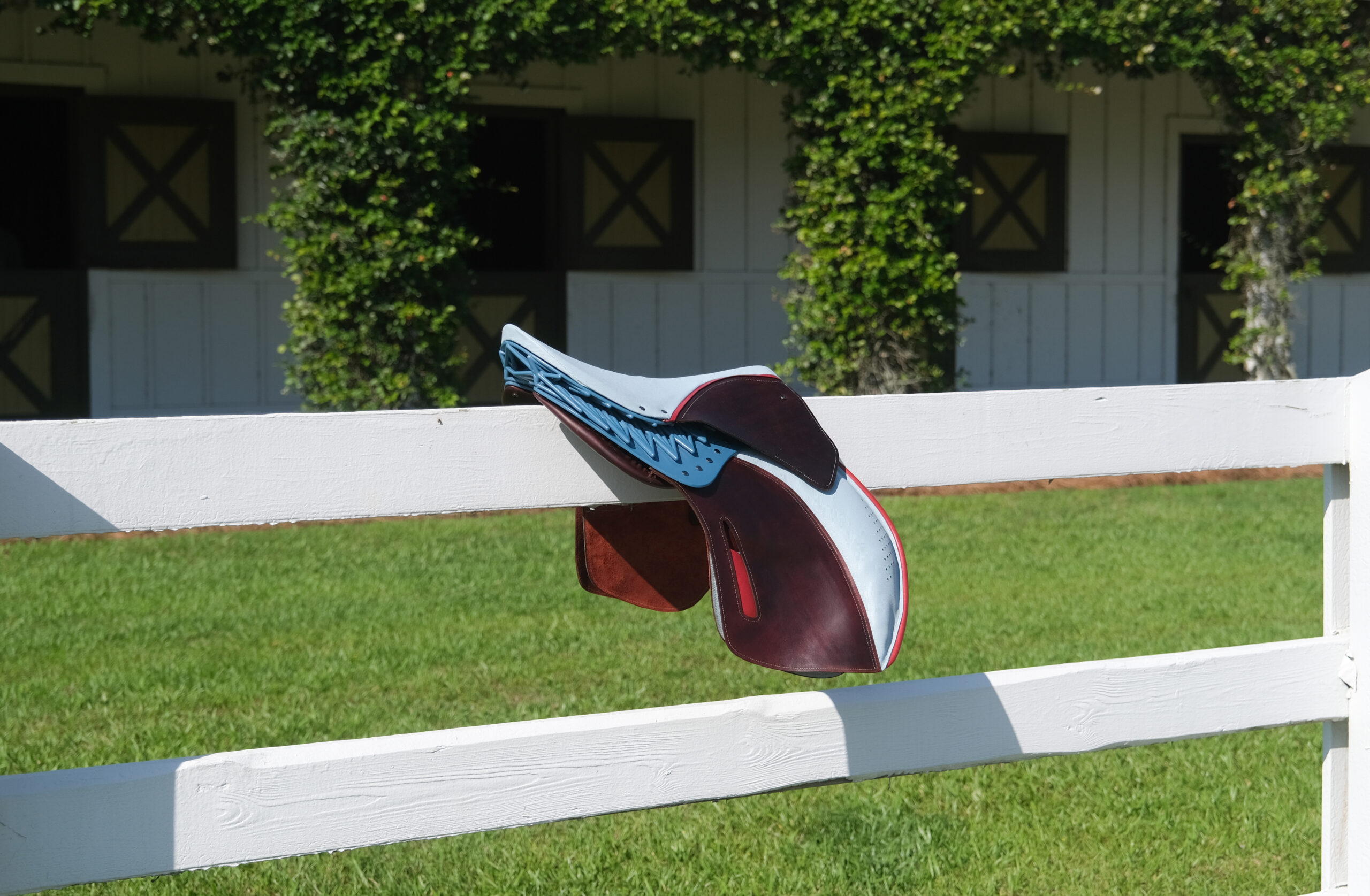
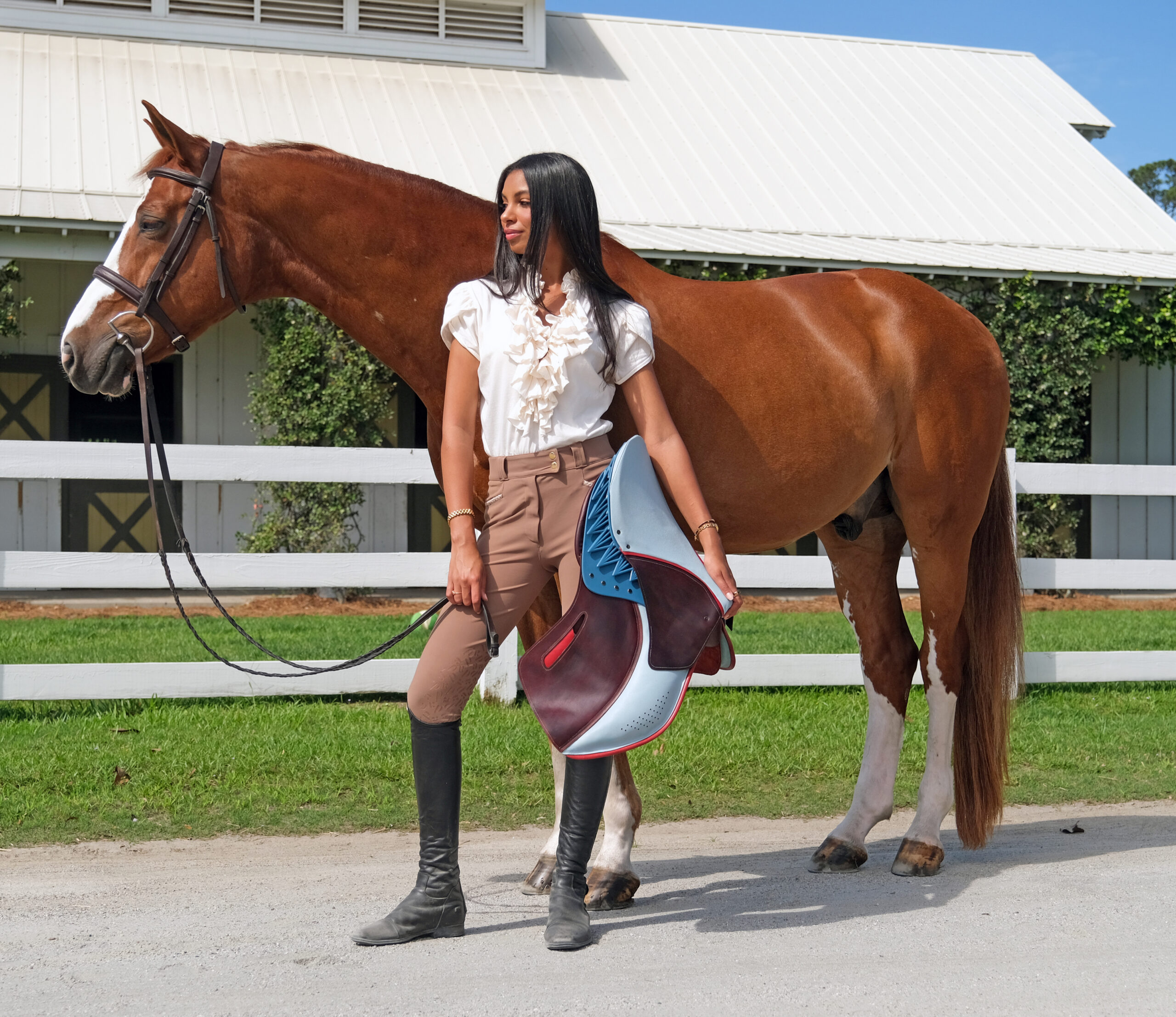
What principles or values guide your design work?
I have always been interested in sustainability, which I also studied as my minor at SCAD. My love for nature, animals, and outdoor activities deeply influences my design approach. As a designer, my goal is to make a meaningful impact on people and the planet through thoughtful and purpose-driven design. I am passionate about innovating to create a more sustainable future.
Is there a material, method, or approach that you especially love working with?
My favorite part of any design process is the ideation phase. I love to come up with unique concepts and solve problems through design. I love to draw and I have a lot of fun getting all of my ideas on paper.
For Catalyst, I spent a lot of time in the accessory design building at SCAD. My friend Alexa Chepolis helped sew my project, and I loved getting to learn from her about leather working.
What’s your dream design project?
My dream design project would be further pursuing my Catalyst saddle and seeing it get manufactured.
The leather craftsman for the saddle was SCAD student , Alexa Chepolis who assisted with the sewing of the saddle.

